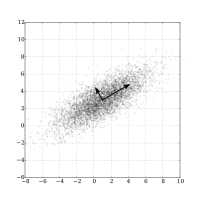
Photo from wikipedia
Abstract Culicoides biting midges (Diptera: Ceratopogonidae) are the main vectors of livestock diseases such as bluetongue (BT) which mainly affect sheep and cattle. In Spain, bluetongue virus (BTV) is transmitted… Click to show full abstract
Abstract Culicoides biting midges (Diptera: Ceratopogonidae) are the main vectors of livestock diseases such as bluetongue (BT) which mainly affect sheep and cattle. In Spain, bluetongue virus (BTV) is transmitted by several Culicoides taxa, including Culicoides imicola, Obsoletus complex, Culicoides newsteadi and Culicoides pulicaris that vary in seasonality and distribution, affecting the distribution and dynamics of BT outbreaks. Path analysis is useful for separating direct and indirect, biotic and abiotic determinants of species' population performance and is ideal for understanding the sensitivity of adult Culicoides dynamics to multiple environmental drivers. Start, end of season and length of overwintering of adult Culicoides were analysed across 329 sites in Spain sampled from 2005 to 2010 during the National Entomosurveillance Program for BTV with path analysis, to determine the direct and indirect effects of land use, climate and host factor variables. Culicoides taxa had species-specific responses to environmental variables. While the seasonality of adult C. imicola was strongly affected by topography, temperature, cover of agro-forestry and sclerophyllous vegetation, rainfall, livestock density, photoperiod in autumn and the abundance of Culicoides females, Obsoletus complex species seasonality was affected by land-use variables such as cover of natural grassland and broad-leaved forest. Culicoides female abundance was the most explanatory variable for the seasonality of C. newsteadi, while C. pulicaris showed that temperature during winter and the photoperiod in November had a strong effect on the start of the season and the length of overwinter period of this species. These results indicate that the seasonal vector-free period (SVFP) in Spain will vary between competent vector taxa and geographic locations, dependent on the different responses of each taxa to environmental conditions.
Journal Title: Bulletin of Entomological Research
Year Published: 2023
Link to full text (if available)
Share on Social Media: Sign Up to like & get
recommendations!